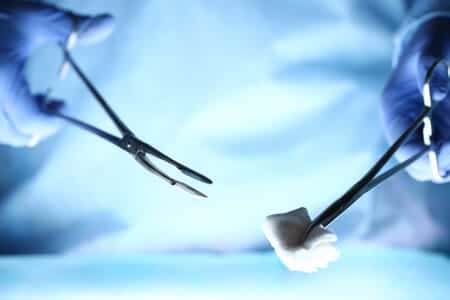Faulty Stitch Causes Fatal Valve Replacement Surgery
This case involves a male patient who underwent an aortic valve replacement. After the operation, he reported feeling severe chest pain. Shortly thereafter, the patient was given an x-ray which showed a buildup of fluid in his lungs. The patient eventually went into renal failure and coded. Resuscitation attempts were made but he never regained consciousness. An autopsy was performed and the cause of death was determined to be due to a blockage of the coronary ostium from the aortic valve graft and adherent thrombosis. It was alleged that a failed stitch in the patient’s aortic valve compromised the ostium. An expert cardiothoracic surgeon was sought to review the records and opine on the standard of care.
Question(s) For Expert Witness
1. How often do you perform valve replacement surgeries?
2. What are the possible complications of the procedure?
3. Are there any safeguards that need to be followed to prevent occlusion from the valve graft?
Expert Witness Response E-107122
 I am the director of a residency program for cardiothoracic surgery, and I perform about 5 aortic valve procedures per month. I also have a background in investigation, as I belong to the oversight committee of the hospitals I work at, and frequently look at cases to determine if negative outcomes could have been avoided. It is possible to stitch in an aortic valve is such a way that it compromises the ostium to the right coronary artery. With all kinds of valves, if you stitch the valve too high, this outcome can happen. I teach my trainees to put an instrument in the right coronary ostium at different times during the procedure to make sure that it is okay. With animal tissue valves, one of the three posts that rise up from the ring to support the leaflets can be injudiciously positioned right over the ostium. Photographs of the inside of the aorta on autopsy would be the only likely way to show this, as I doubt the autopsy report will be this specific. If it should have it have been recognized early, that is a different matter. If thrombus formed at the ring, and this is what blocked the right coronary, that would be more of an imaginable, but freak occurrence.
I am the director of a residency program for cardiothoracic surgery, and I perform about 5 aortic valve procedures per month. I also have a background in investigation, as I belong to the oversight committee of the hospitals I work at, and frequently look at cases to determine if negative outcomes could have been avoided. It is possible to stitch in an aortic valve is such a way that it compromises the ostium to the right coronary artery. With all kinds of valves, if you stitch the valve too high, this outcome can happen. I teach my trainees to put an instrument in the right coronary ostium at different times during the procedure to make sure that it is okay. With animal tissue valves, one of the three posts that rise up from the ring to support the leaflets can be injudiciously positioned right over the ostium. Photographs of the inside of the aorta on autopsy would be the only likely way to show this, as I doubt the autopsy report will be this specific. If it should have it have been recognized early, that is a different matter. If thrombus formed at the ring, and this is what blocked the right coronary, that would be more of an imaginable, but freak occurrence.
About the author
Wendy Ketner, M.D.
Dr. Wendy Ketner is a distinguished medical professional with a comprehensive background in surgery and medical research. Currently serving as the Senior Vice President of Medical Affairs at the Expert Institute, she plays a pivotal role in overseeing the organization's most important client relationships. Dr. Ketner's extensive surgical training was completed at Mount Sinai Beth Israel, where she gained hands-on experience in various general surgery procedures, including hernia repairs, cholecystectomies, appendectomies, mastectomies for breast cancer, breast reconstruction, surgical oncology, vascular surgery, and colorectal surgery. She also provided care in the surgical intensive care unit.
Her research interests have focused on post-mastectomy reconstruction and the surgical treatment of gastric cancer, including co-authoring a textbook chapter on the subject. Additionally, she has contributed to research on the percutaneous delivery of stem cells following myocardial infarction.
Dr. Ketner's educational background includes a Bachelor's degree from Yale University in Latin American Studies and a Doctor of Medicine (M.D.) from SUNY Downstate College of Medicine. Moreover, she is a member of the Board of Advisors for Opollo Technologies, a fintech healthcare AI company, contributing her medical expertise to enhance healthcare technology solutions. Her role at Expert Institute involves leveraging her medical knowledge to provide insights into legal cases, underscoring her unique blend of medical and legal acumen.
Find an expert witness near you
What State is your case in?
Subscribe to our newsletter
Join our newsletter to stay up to date on legal news, insights and product updates from Expert Institute.



